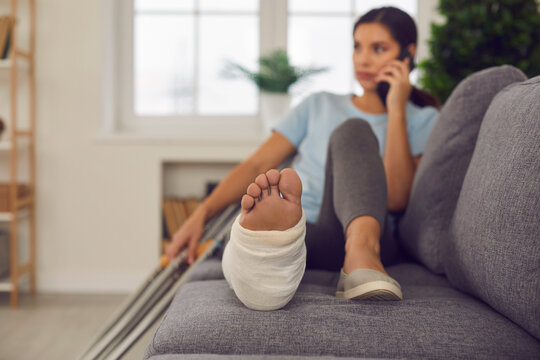Previously we have discussed the topic about anthropometric examination in medical science, and now is the time for us to learn more about the role of anthropometry in Orthopedics. But, we need to know about this science, orthopedics is a branch of medicine that is used to develop biomechanics.
Anthropometry is a measurement method that plays a role in many branches of science, including medical science, especially orthopedics. So what is the role of anthropometry in orthopedics? Let’s review together
Get to know Orthopedics
Nicholas Andry is the person who first launched the term “orthopaedics“, which is derived from the Greek “orthos” which means right or straight and “paidion” which means child. Nicholas later published Orthopaedia: or the Art of Correcting and Preventing Deformities in Children in 1741, in the age of 81.

Orthopedics is a branch of medicine that treats and prevents various disorders of the musculoskeletal system or body movement system involving the function of bones, joints, ligaments, muscles, blood vessels, nerves, tendons, and spine.
In orthopedic treatment, the doctor on duty is an orthopedic specialist or Bone and Joint Medicine Specialist. If the condition is severe enough, orthopedic surgery is required
Orthopedic surgery is a collection of types of surgery that aims to treat diseases that occur in the body’s movement system. Orthopedic surgery can treat various diseases or injuries that arise in the bones, joints, tendons, ligaments, muscles, and muscle nerves.
Types of Orthopedic Surgery
Orthopedic surgery itself can be classified into a number of procedures as follows :
- Arthroscopy
a surgical procedure with an incision the size of a keyhole to see the condition of the joint and overcome problems that exist in the joint. - Pen installation
a surgical procedure by connecting and maintaining the position of the broken bone with the help of a pen consisting of a metal plate and special bolts. Installation of the pen is done to restore the position of the broken bone to its original position held with the help of the pen during the healing period. In certain situations, it is also possible to retract the pen after a certain period of time. - Joint replacement
this surgery is performed to replace a joint that is no longer functioning properly with an artificial joint. Damaged joints can be replaced partially (partial) or completely (total). Artificial joints can be constructed of plastic, metal, or ceramic materials, and made to imitate the movement of the original joint so that the patient can move as before. - Bone fusion
this surgery is done by joining several bones together, with bone grafts or with the help of metal. Bone fusion is often performed on the spine to relieve pain and improve spinal stability due to disease. By uniting a number of vertebrae, there is no longer any movement between the vertebrae, so the pain you feel will disappear. - Osteotomi
orthopedic surgical procedures by cutting and changing the shape of bone, especially to repair joints. Osteotomy is often performed on the knee to repair an inflamed knee joint. However, osteotomy procedures can also be performed on other parts of the body such as the pelvis, jaw, chin, toes, and spine. - Tendon and ligament repair surgery
Tendons and ligaments are connective tissues between bones and muscles. Both can be damaged or torn, this condition causes the ability of the joint to weaken and movement becomes limited and painful.
The Role of Anthropometry in Orthopedics
Anthropometry or measurement of body dimensions is a term that comes from the Ancient Greek anthropos which means human and metron which means measure. The dimensions of the human body in question start from bone, muscle and fat tissue.
In orthopedic treatment, knowing the dimensions of the human body is very necessary, especially if after treatment the patient is required to use mobility aids. The design of movement aids such as crutches must pay attention to ergonomic principles and human anthropometry. It is necessary to carry out accurate and precise anthropometric measurements in order to optimally assist patients and minimize injury.
The Most Accurate Anthropometric Measuring Tool
The results of anthropometric measurements for orthopedics must be accurate and precise. Therefore, a measuring instrument is needed that supports these accurate results. Here is a selection of the best measuring tools that can be used:
Portable Anthropometry Kit for Medical Schools
Metrisis – Portable anthropometry by Solo Abadi Indonesia is an anthropometric measuring instrument derived from the anthropometric chair which is packaged in a portable form, with the aim that the measuring instrument can be moved or carried anywhere easily. Like an innovation, portable anthropometry can be used to measure up to more than 100 dimensions of the human body.
The function of this tool is to carry out anthropometric measurements that are carried out carefully and prioritize the accuracy of the data. This instrument offers measurement capabilities of up to 100 measurements. In addition, its portable form makes this tool can be used unlimited time and done anywhere.
Anthropometric kits from SOLO ABADI have been sent to various departments in Indonesia. Currently, 8 Portable Anthropometry kits from SOLO ABADI have been used, one of which is the Department of Medicine, Islamic University of Indonesia. The following are the details of the Anthropometry Portable Kit product.
Contact Us To Get Anthropometry Products
Get anthropometric measuring tools from Solo Abadi by filling in the ask for price feature available. You can also connect directly through our WhatsApp, because we are ready to contact you immediately.








